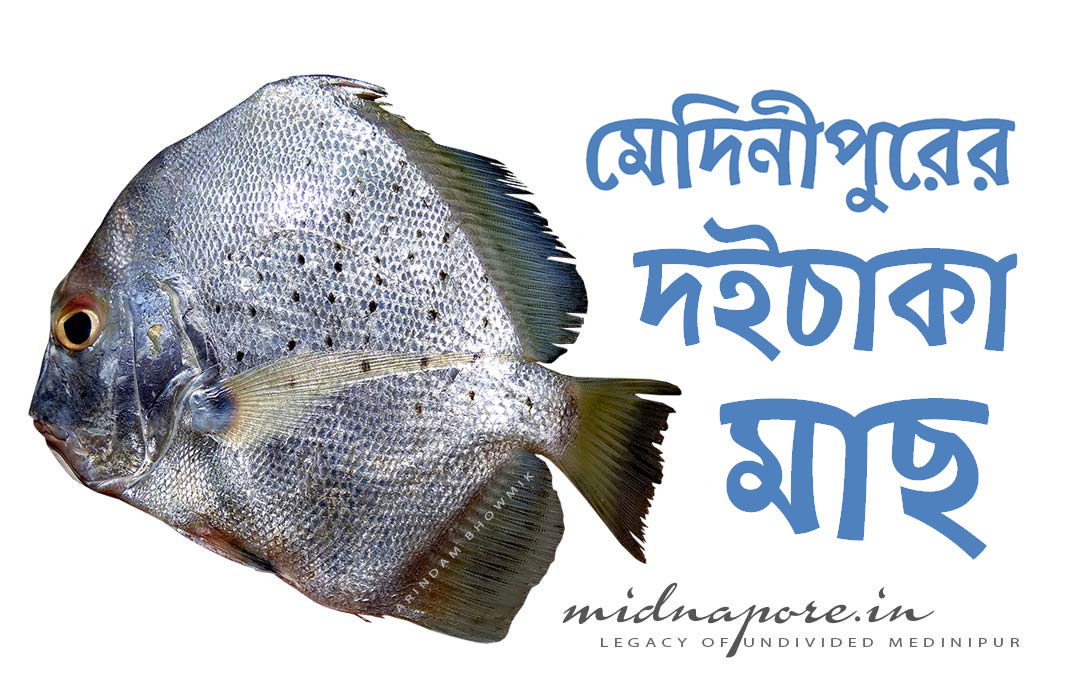

Arindam Bhowmik
“Doichaka” is a testy and popular sea fish in our East Midnapore costal area. You may not aware about this fish. Because, the quantity of fish caught by fisherman’s are not sufficient for entire West Bengal as well as undivided Medinipur District (Jhargram, West Medinipur & East Medinipur). All the fishes are sold locally in Digha-Ramnagar area. “Doichaka” is the local name; no one knows this name outside Medinipur.

Now let us see its name in other parts of India. In Gujarat it is called Chand (ચાઁદ), in Maharashtra also they call it Chand (चाँद), Painthi (தீரட்டை, திரட்டை) and Therattai (பைந்தீ, பய்ந்தி) are the names available in Tamilnadu. Telegu people call it Thotha/Thetti (తెట్టి).
It is also available in another Bengali populated country – Bangladesh. But there it is known by the name Pan fish (পান মাছ). It is called Tudung Periuk in Malaysia and Cao Xi in Hong Kong. Our “Doichaka” is also known as Batfish, Butterfish, Concertina Fish, Drepane, Jetto, Moonfish, Peppercorn, Silver Moonfish, Spotted Batfish, Spotted Drepane, Spotted Moonfish, Spotted Sickle, Spotted Spadefish etc.
I found 12 different names of ‘Doichaka’ in Malay language*** - Agung-agung (Malay), Baharu-baharu (Malay), Bebaru (Malay), Berbaharu (Malay), Buna (Malay), Daun Baharu (Malay), Daun Baru Bintik (Malay), Daun-baru Bintik (Malay), Paling (Malay), Sapi-sapi (Malay), Sapih-sapih (Malay), Sapihi (Malay), Telinga Gajah (Malay).
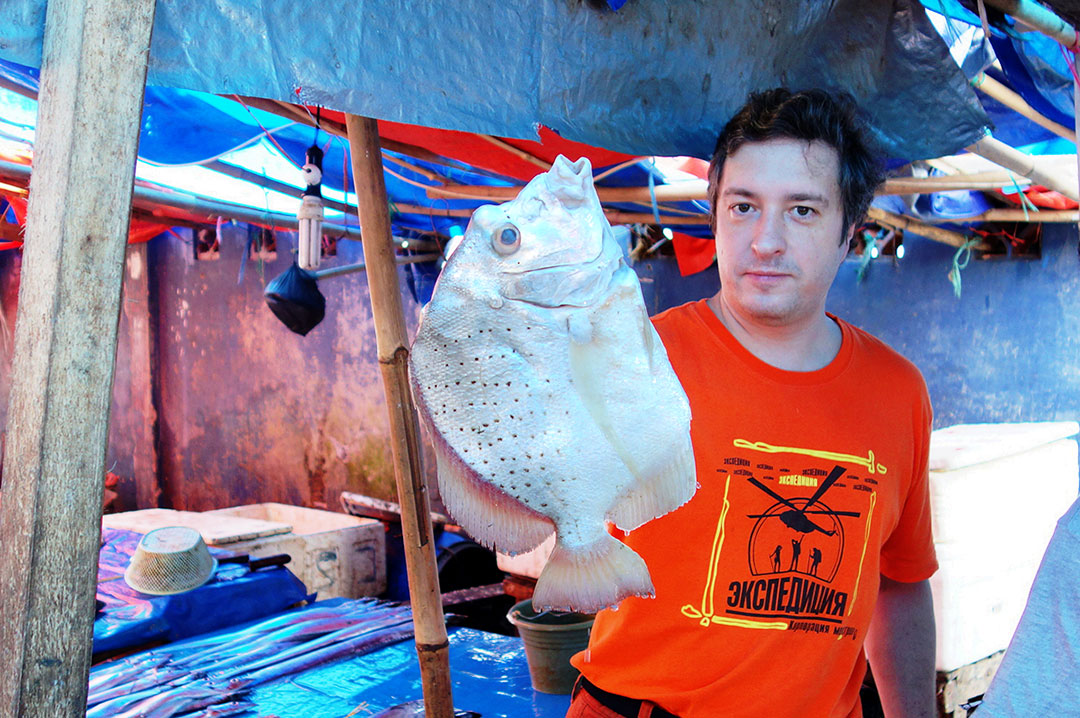
Our “Doichaka” is actually native to the Indo-Pacific and northern Australia (Linnaeus, 1758). Scientific name is Drepane punctata, commonly known as spotted sicklefish. Available from India to northern Australia, New Guinea, Indonesia, Philippines, Taiwan and Japan. It is widely found in Chilka Lake of Odisha (India). Doichaka is fairly common in the Godavari estuary of Andhra Pradesh (India).
Spotted Sicklefish (Doichaka) is generally found over mud and sand bottoms close to coral and rocky reefs in estuaries, harbours and reefs. They feed on benthic fish and invertebrates. Doichaka can grow 50cm long.
Body of Spotted Sicklefish (Doichaka) is oval and strongly compressed; highly protrusible mouth that is forming a downward-pointing tube when protruded; rounded or bluntly wedge shaped caudal fin; elongate and falciform pectoral fins and large adults with a bump or bony knob on interorbital region, a result of hyperostosis of frontal bones#. Large eyes situated on the upper edge of the head. You can see a large orange spot just above the base of pectoral fins.

It has total 8 to 10 Dorsal spines, total 20 to 22 Dorsal soft rays, 3 Anal spines and 17 to 19 Anal soft rays. Body color is generally silvery with greenish tinge above. Pectoral fins of ‘Doichaka’ are long and pointed. Similar to D. Longimana* but differs in having 4 to 11 vertical gray spots on the upper half of the sides, and generally 8 dorsal spines [against none (spots) and generally 9 spines in D. Longimana**].
This harmless fish can be found solitary or small groups feeding on what they can scavenge from the seabed. Sea worms and prawn meat works pretty well in catching sicklefishes, but hook size should not be too large when targeting for them as they have small mouth. They will take full size prawns as well but it takes awhile for them to chew their way through.
On the angler's end, it can sometimes be perceive as a small fish nibbling on the bait. A well timed strike can increase more successful hook ups. The fight from sicklefish is not too sluggish nor fast but can do short bursts especially from larger ones. Typical size encounter locally ranges from 300g - 1kg but they can grow much bigger.

On June 12, 2001 Roberts Noel of Sandy Creek (Mackay, Queensland Australia) caught 2.350 kg Spotted Sicklefish. But that record was out weighted when a 9kg Spotted Sicklefish was caught at Changi in Singapore.
Refers to fishes that regularly migrate between freshwater and the sea (in both directions), but not for the purpose of breeding, as in anadromous and catadromous$ species. Sub-division of diadromous%. Migrations should be cyclical and predictable and cover more than 100 km.
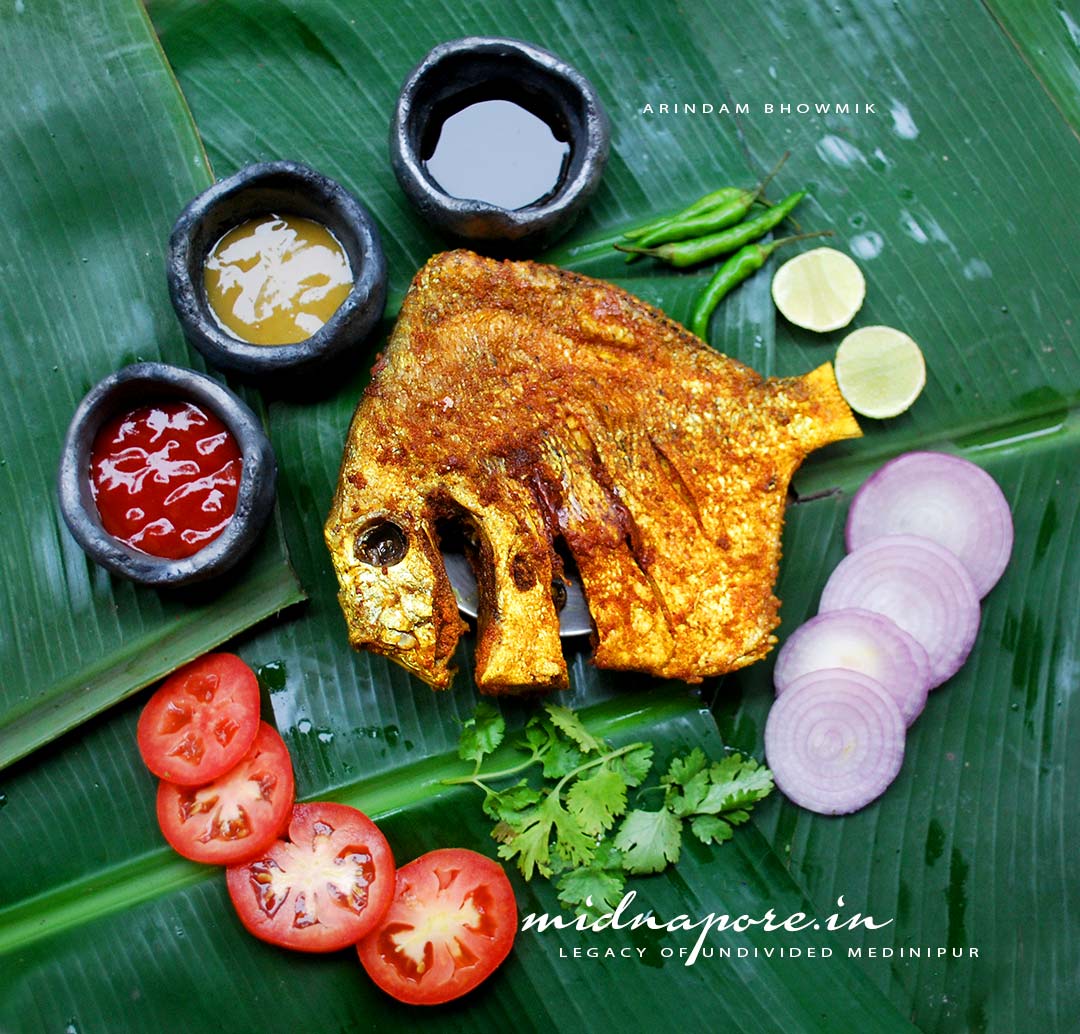
Meat quality is average with slight muddy taste. Proper preparation and seasoning can make this fish a good dish and is sometimes served in restaurants. At home, you can simply fry Doichaka using turmeric powder, chilli powder and salt. But, I personally love ‘Doichaka Fish Kabab’ and ‘Doichaka Fish Curry’.
500 grams Doichaka fish , 3/4 cup Curd (Dahi / Yogurt), 2 Onions, 6 Green Chillies, 8 cloves Garlic, 1 inch Ginger paste, 1 teaspoon Turmeric powder (Haldi), 2 teaspoon Cumin powder (Jeera), 1 tablespoon Coriander Powder (Dhania), 2 teaspoon Red Chilli powder, 1 teaspoon Garam masala powder, 1 teaspoon Black pepper powder, 1 Bay leaf (tej patta), 3 Cloves (Laung), 2 Cardamom (Elaichi), Mustard oil for deep frying the fish and 2 tablespoon for the curry, Salt to taste.
Take 500gm cleaned Doichaka fish and add 1 teaspoon turmeric powder, 1 teaspoon red chili powder and salt to taste. Mix this spice well on both sides of the fish and marinate for 30 minutes. Grind onions, green chilies, ginger and garlic into smooth paste adding little water. Deep fry all the pieces of fish on medium flame. In a pan add 2 tablespoon oil and add cloves, cardamom and bay leaf. Add the ‘onion-chilli-ginger-garlic’ paste and cook for 10 to 20 minutes until the raw smell of the paste is gone. Now add all the spice powders including turmeric powder, cumin powder, red chilli powder, coriander powder, garam masala powder, black pepper powder into the pan and cook for about 5 minutes. After 5 minutes add 1 cup water, mix well and bring it to boil. Now add whisked yogurt (Curd/Dahi), salt to taste and mix again. Bring it to boil on high flame then simmer and cook for 10 minutes. Finally add all the fried fish into the curry and cook for another 5 minutes. Turn off flame and serve hot.
Your Doi-Doichaka is ready.
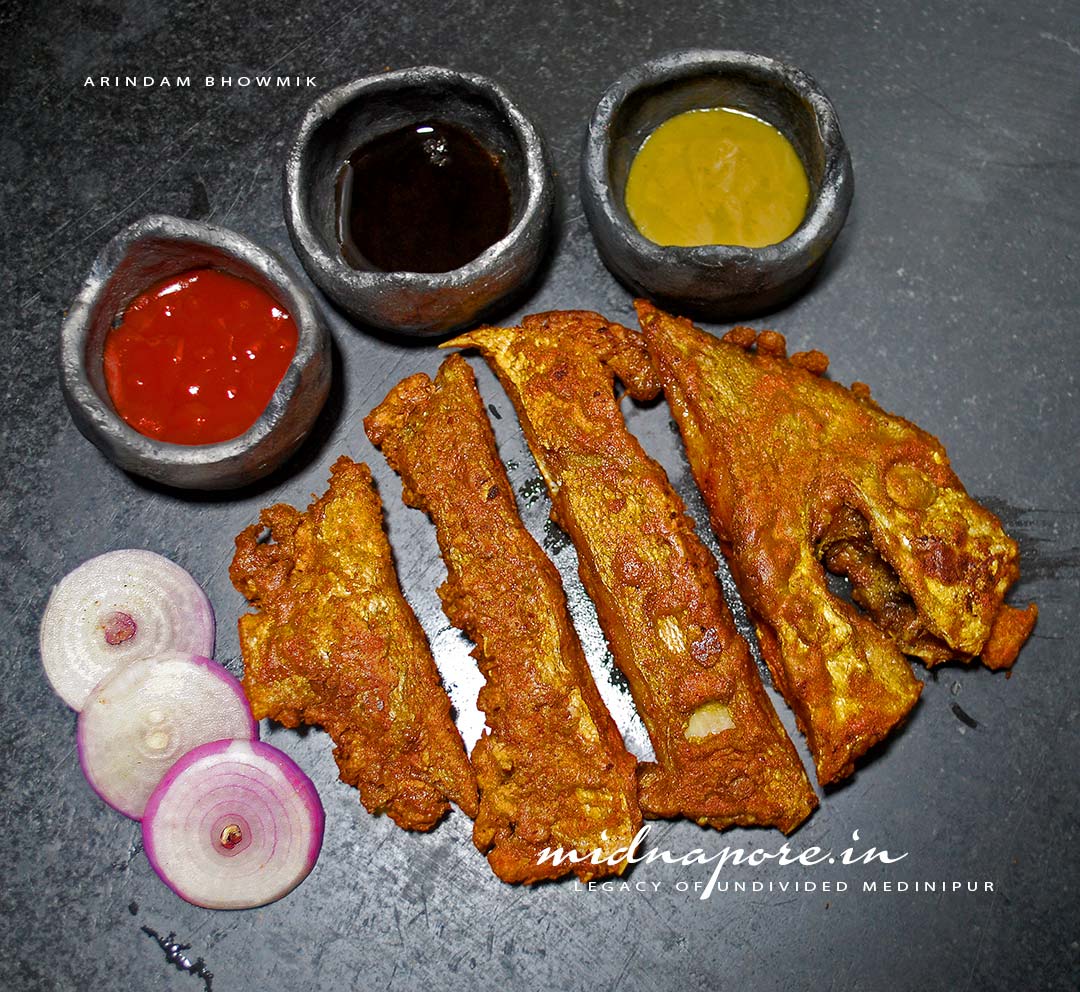
1/2 kg Doichaka Fish, Cumin Zeera – 1 Tsp, Whole Red Chilli (Laal Mirch) – 8, Coriander Seeds (Dhania) – 1 Tsp, Gram Flour (Besan) – 1 Tbsp, Garam Masala Powder – 2 Tsp, Red Chili Powder Laal Mirch – 1 Tsp, Coriander Powder – 1 Tsp, Black Pepper Powder (Kali Mirch) – 1/2 Tsp, Salt, 1 Egg, Ginger Garlic Paste – 1 Tsp.
In a pan, toast cumin, coriander seeds, whole red chilies until it get aromatic. Make sure the temperature of pan should be medium. Now roast the gram flour (besan) on low heat until it shows the slight brown color and gets aromatic. Now in the grinder jar, add toasted cumin, coriander, whole red chilies, roasted gram flour, garam masala powder, red chili powder, coriander powder, and black pepper. Grind the spices to make a fine powder. Kabab Masala Powder is ready.
Now add Kabab Masala Powder, Egg, Ginger Garlic Paste and fish in a container and mix well. If require you can slice the fishes depending on the size of the fish. Merinate the fish for 30 minutes. Deep-fry the fishes in oil.
Your Fish Kabab is ready.
Arindam Bhowmik
midnapore.in
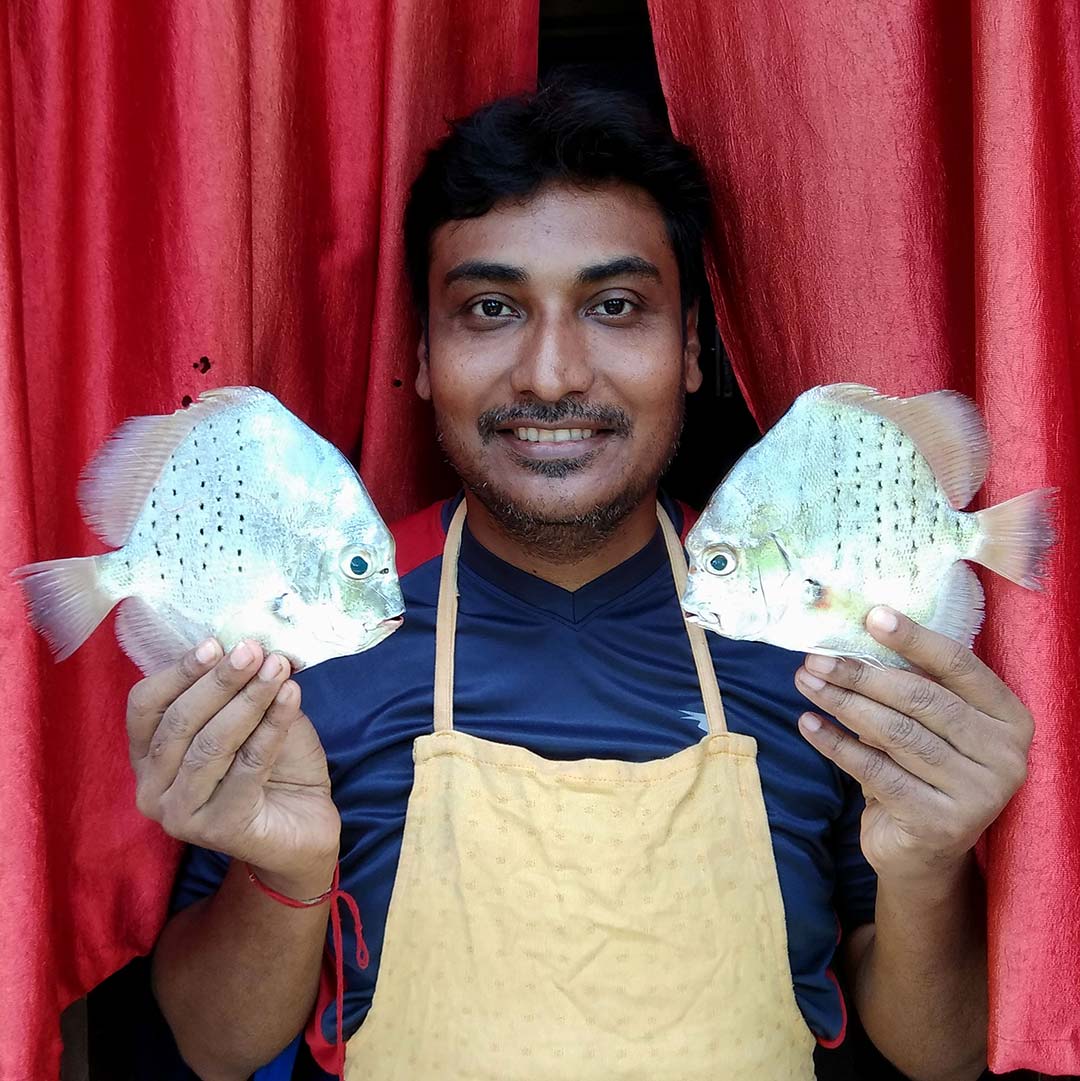
References